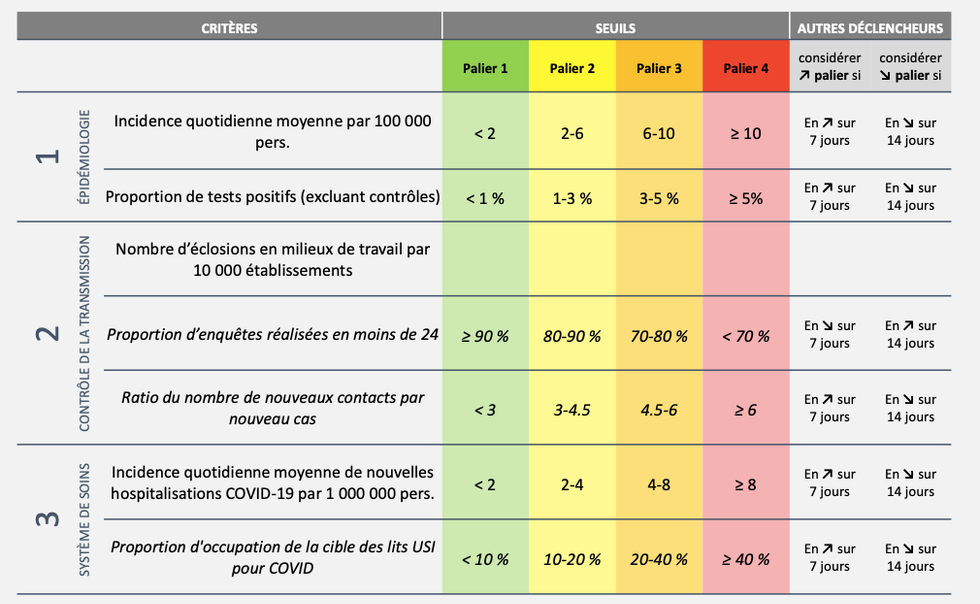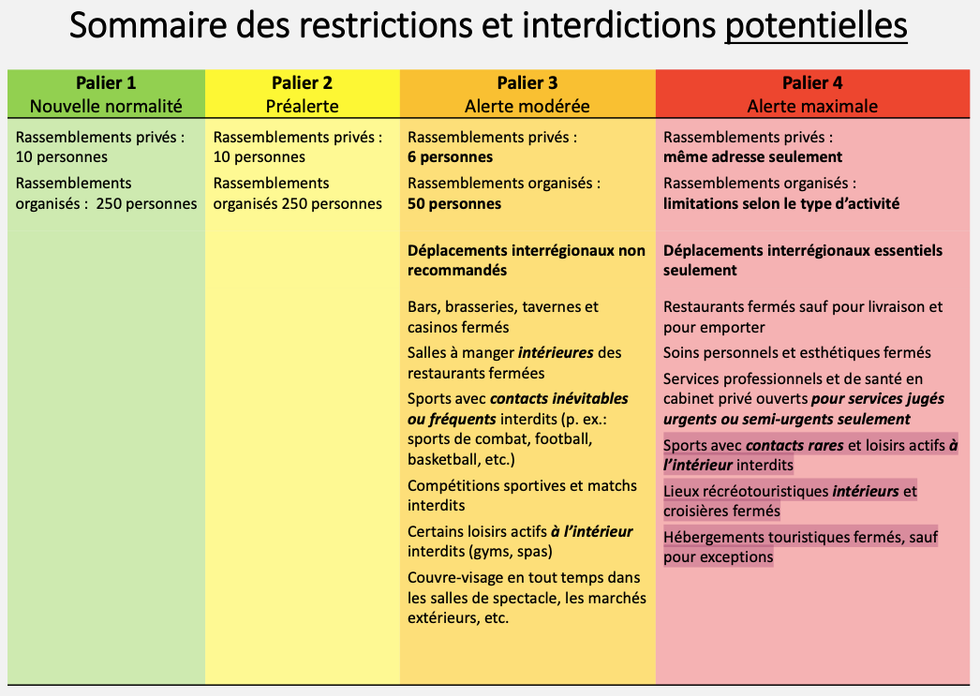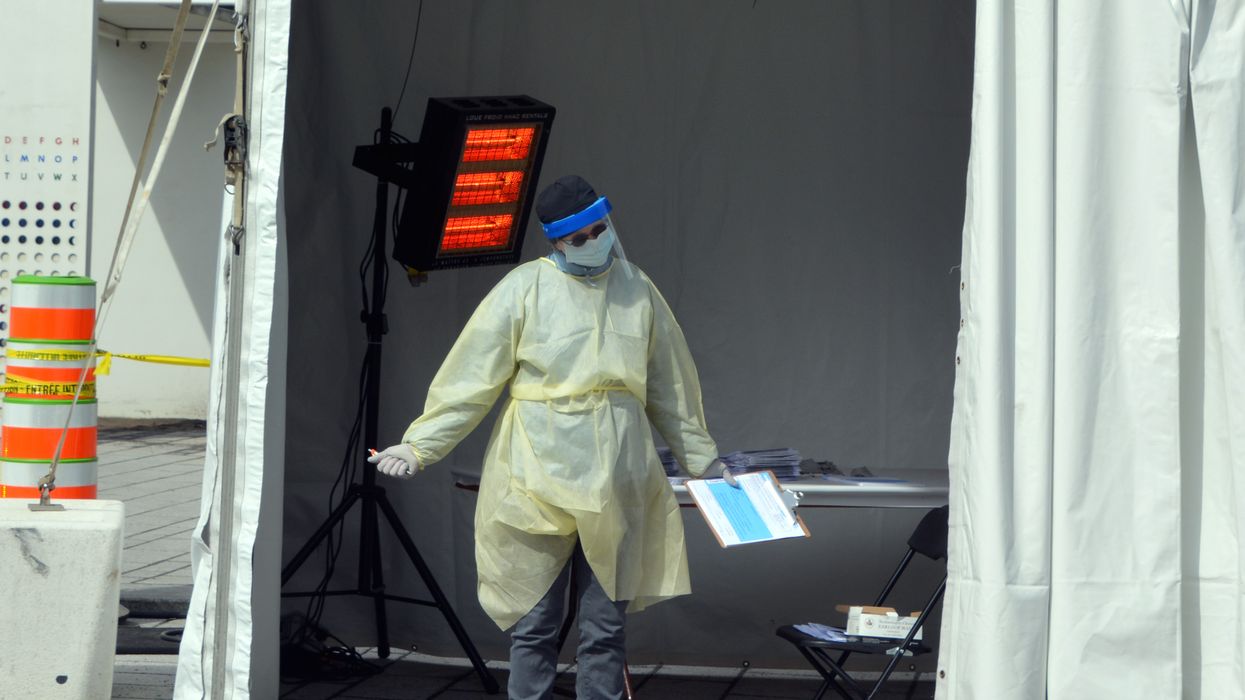Here's What It Could Look Like If Quebec Regions Moved Into 'Red Alert'
The red zone has been called the "maximum" level of alert in Quebec's COVID-19 alert system.
Though specific red zone measures are subject to change and adaptation, the government has nevertheless outlined what they might entail.
A document titled "Alert and gradual intervention system: a plan for the next stage of the pandemic," which was posted on the Ministry of Health and Social Services website, explains what alerts could look like for Quebec regions.
It's important to note that the restrictions outlined in the plan for an orange alert were not identical to the restrictions the government actually ended up putting in place.
Moreover, the Ministry of Health makes clear that the document functions as a "reference tool" and is "subject to change due to the evolving nature of the pandemic and the recommendations of public health authorities."
Plans change — but the document still offers a glimpse at what an extreme situation could look like.
Editor's Choice: Quebec Is Now Asking Everyone To Limit All Social Contacts
What does "red alert" actually mean?
 Ministère de la Santé et des Services sociaux
Ministère de la Santé et des Services sociauxIn the reference doc, the provincial government classified it as the highest alert level and the "restriction or stopping of non-essential activities for which the risk cannot be sufficiently controlled."
This means that while the government wants to avoid total confinement, as we remember vividly from the first wave in early March, it would restrict or selectively close operations where it can't control the risk of spreading the virus.
The document states that this could include:
Gatherings
Businesses
Travel
Sports
Education
Workplaces
Arts, culture and entertainment
The red alert level is considered a temporary measure while the government and public health officials try to contain SARS-CoV-2.
How did the Quebec government plan on measuring its alert levels?
 Ministère de la Santé et des Services sociaux
Ministère de la Santé et des Services sociauxFor the orange zone, the proportion of positive tests is outlined as 3 to 5%, with 6-10 cases per 100,000 people.
To get to red, average daily cases would have to get to or exceed 10 per 100,000 people, and the proportion of positive tests would be at least 5%.
Intensive care beds dedicated to COVID-19 patients would exceed 40% of beds in the province.
What about private gatherings and business closures?
 Ministère de la Santé et des Services sociaux
Ministère de la Santé et des Services sociauxWith the red zone being the maximum alert level outlined by the province, private gatherings could be restricted to residents of the same address only, the doc shows.
Depending on the type of activity, many organized gatherings could also be restricted. Non-essential travel could be stopped, with essential, interregional travel permitted.
The same applies to private medical services, which might only be able to take clients based on urgent or semi-urgent situations only.
All aesthetic and personal care services could close and the same would go for restaurants except for takeout and delivery.
Contact and indoor sports could be cancelled as well as indoor recreational tourism.
What are the key takeaways?
There is no indication that the government plans to move any region into the red zone anytime soon. But one determining factor could be COVID-19 cases exceeding 10 per 100,000 people in a seven-day period.
The provincial government wants to avoid long-term lockdown again as much as possible and would instead restrict business operations and non-essential activities until the situation is more under control.
Private gatherings in a red alert situation could be restricted to residents of the same address only.


